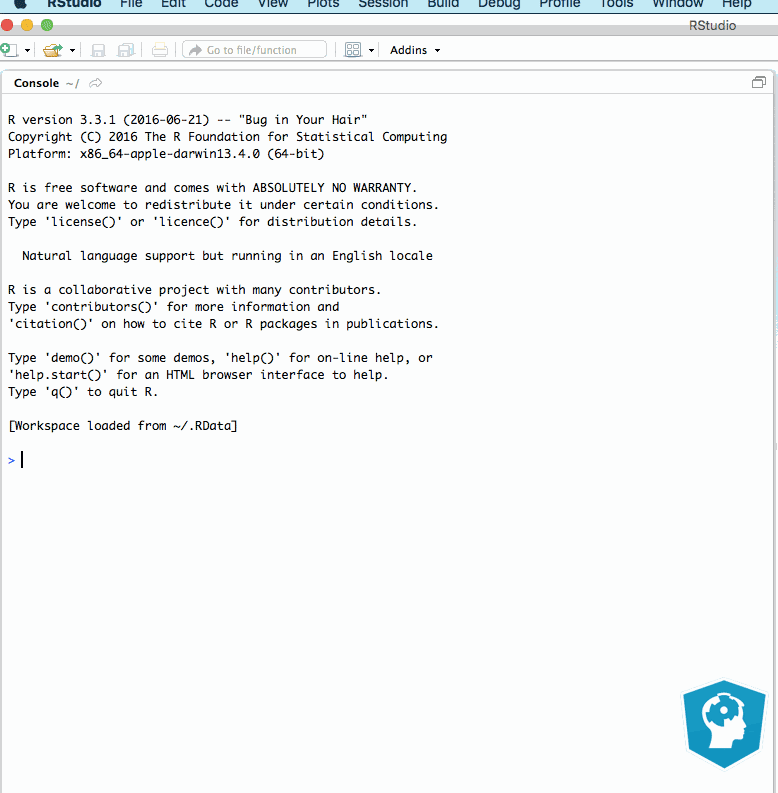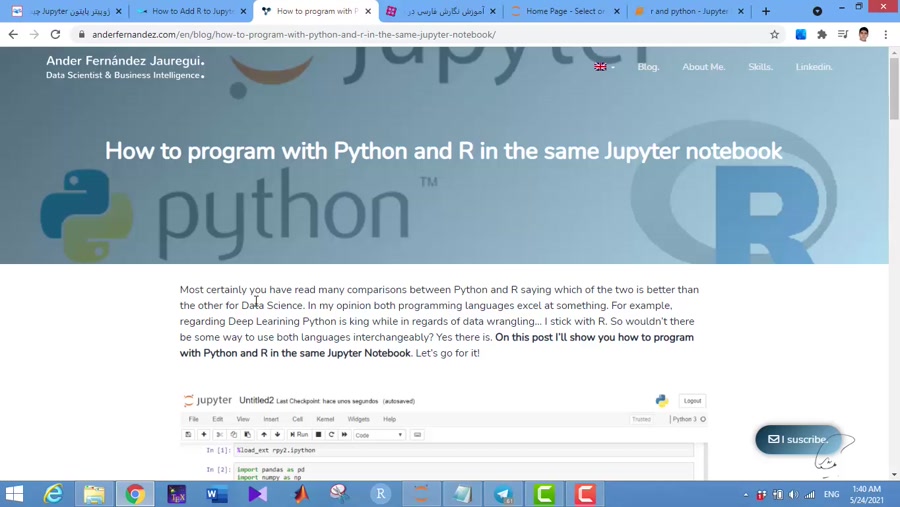

- R jupyter notebook online how to#
- R jupyter notebook online install#
- R jupyter notebook online code#
- R jupyter notebook online windows#
We love Jupyter Notebooks, the notebook format is an effective way to construct your data narrative. Jupyter Notebooks are Breathtakingly Featureless - Use Jupyter Lab. Launching Jupyter Notebook with File Explorer and Command Prompt. You can then type jupyter notebook to launch Jupyter Notebook within that specific folder.
R jupyter notebook online windows#
Select the instance that you want to shut down, and then select Stop.Ģ hours ago Once you’ve entered your specific folder with Windows Explorer, you can simply press ALT + D, type in cmd and press Enter.Return to the AI Platform Notebooks page in the Google Cloud Console.Close the browser tab or window for your notebook instance.Select Open JupyterLab for the instance that you want to open.Go to the AI Platform Notebooks page in the Google Cloud Console.

To shut down a notebook instance, follow these steps: To choose this you would type the number to the left of “USA (OR)” Note that the mirror has changed.
When prompted to select a CRAN mirror, choose “USA (OR)”. R jupyter notebook online install#
You’ll be prompted to create a local user R installation profile as you cannot install to the base system, type Yes. Now, use R commands to install whatever package you need. Click on the Launcher (+) in the top left. R jupyter notebook online how to#
› Hollywood Casino Bay St Louis Golf Courseįrequently Asked Questions How to install packages in Jupyter Notebook?. › Northwestern Preparatory School Crestline Ca. › Fire Pump Testing Certification Classes. You may find it helpful working with geospatial data analysis. datashader: "Datashader is a data rasterization pipeline for automating the process of creating meaningful representations of large amounts of data." datashader is a more specific tool than the ones above. bokeh: "Bokeh is an interactive visualization library that targets modern web browsers for presentation." bokeh is useful for creating dashboards (similar to Tableau's dashboard functionality). Consider pandas if you like to learn a complex and powerful data analysis package along the way! ( pandas website) On top of all of this, pandas has native support for data visualization (as with seaborn and plotly, pandas visualizations are built on top of the Ur-library matplotlib). pandas has a number of essential features like DataFrames, robust and well-optimized data structures built upon the NumPy library, etc. pandas: Technically pandas is not a data visualization package so much as a fully featured data science library. 
To create a new notebook for the R language, in the Jupyter Notebook menu, select New, then select R. Open the environment with the R package using the Open with Jupyter Notebook option. ggplot: ggplot is a port of the R library ggplot2 that like seaborn leverages the Grammar of Graphics theoretical approach to visualization (see more in Dataviz Best Practices). Next to Packages, select Python 3.7 and R.like seaborn, plotly is higher-level and has additional interactivity features. plotly: "plotly.py is an interactive, open-source, and browser-based graphing library for Python".
R jupyter notebook online code#
It provides a high-level interface for drawing attractive and informative statistical graphics." seaborn is an excellent choice for high-level visualization that produces an aesthetically pleasing result in relatively few lines of code ( seaborn website)
seaborn: "Seaborn is a Python data visualization library based on matplotlib. List of widely used Python visualization packages: Consider what languages and packages folks in your discipline tend to use, but there's really not a wrong choice! R has historically been used more in statistical and quantitative analyses, and Python is a general-purpose programming language used in everything from text analysis to astronomy. If you're new to programming, keep in mind that each language has a very similar set of capacities. Furthermore, the new trend to share code and research as a narrative (such as in a "Notebook") relies upon these programming languages.Ĭhoosing a language: If you already use Python or R, consider sticking to the language and ecosystem of packages you already use. Each programming language has a distinct ecosystem of data science tools that integrates well with data visualization. If so, Python and R are both excellent fits. Are you currently using Python or R to manage, clean, and/or analyze your data? Would you craft a narrative of your research process that includes a mixture of text, interactive code, and dynamic visualizaitons?







 0 kommentar(er)
0 kommentar(er)
